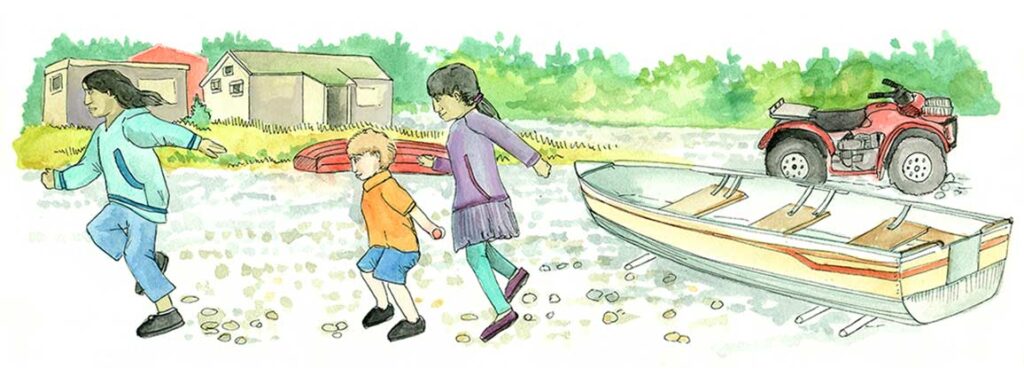Policy Considerations

Trauma-informed policies support learning for all students.
Superintendent
What is this section about?

This section explores policies that can effectively support your community’s trauma-engaged values. This includes ways policy can be used to set the tone and tenor of Alaskan schools, and how policy can center trauma-engaged concepts for both school staff and the community.
Community Adaptations
Policies can be both trauma-engaged and culturally responsive. See the Association of Alaska School Boards’ culturally responsive policies to see how your district’s practices can be adapted. Consider local adaptations that can support policies that are both trauma-engaged and culturally responsive.
Trauma Engaged Schools Knowing to Doing Video Library
The Trauma Engaged Video Library offers over 50 peer-led and statewide experts short videos tied to the topics in the Framework. They are under 10 minutes and easily accessible for personal review or in a group setting to stimulate discussion. Below is the video series for this chapter.
Click on the banner on the top left of the video screen to see the chapter video titles.
What can leadership do?
Click each section below for more info.
A. Recruit a school board member to the leadership team who can serve as a liaison, bringing policy issues back to the school board or committee members for consideration.
B. Reflect on where your school and district are with policy review, development, and support.
The Policy Reflection Questions give leadership some instruments to assess what tools, activities, and mindsets the district has in regards to trauma-informed policy implementation.
C. Help the leadership team, school staff, and community understand how policies are developed, including school district policy, administrative guidance, school handbooks, and classroom policies.
D. Identify key policies to propose to school boards for review, as well as processes for policy adoption and adaptation.
- Checklist and questions for getting started.
- Worksheet 3b: Policy Question Formulation Technique
- Worksheet 3a: Policy Tracking Sheet
- Policy Review Prompt Sheet – This document focuses on policy questions that leadership might want to consider with the goal of working toward a trauma-engaged mindset.
E. Work with school staff to develop administrative guidance for classrooms and school-wide policies and practices.
What can school boards do?
Click each section below for more info.
A. Prioritize practices that build safe and supportive school environments, including positive discipline and restorative policies. Establish school discipline policies that balance an understanding of trauma with consistent rules and consequences that model non-violent communication.
B. Dedicate appropriate resources to support policy and procedure changes.
- Establish a policy committee
- Trauma-Informed Philanthropy – This resource is designed for philanthropic organizations, but can provide a useful framework for those working with funding, budgets, or boards. Source: Elizabeth Prewitt, policy analyst, ACEs Connection (original article).
- Article on funding through The Every Student Succeeds Act that aligns with Transforming Schools
C. Schedule inclusive policy and procedure review through a culturally responsive and trauma-engaged lens. Incorporate a range of community perspectives.
Policy Tracking Sheet
This worksheet is designed to track policies that may be recommended to school boards for review.
D. Establish a policy committee that follows a standard process of seeking broad input from the community and staff prior to policy development. Ensure a link to the leadership team.
- Policy committee guidelines and design
- Include designated youth positions on boards – This AASB publication helps boards find meaningful ways to engage students and prepare them for policy, board procedures, and testimony.
E. Post policies and procedures to ensure broad understanding.
What can school staff do?
Click each section below for more info.
A. Work with leadership to develop administrative guidance and support specific ways to carry out the policy within the district.
B. Update school handbook and classroom policies to align with district policies and administrative guidance.
C. Establish feedback loops for leadership teams and school boards to determine how new policies are impacting students, families, and school staff.
Policy Tracking Sheet
This worksheet is designed to track policies that may be recommended to school boards for review. This can also be used to track which policies the board has already slated to review so that leadership teams can provide input.
What Can Students and Families Do?
Click each section below for more info.
A. Provide insight into how existing policies and procedures are working in the school.
Why youth voice in policy decisions is important and the impact it can have on the effectiveness of our decisions:
- Youth + Social Change through Youth Policy-Makers
- Youth + Social Change through Youth as Decision-Makers
This resource provides 17 different ways to help your student review classroom procedure and policy, so that their input is focused and applicable to how policies are implemented:
Board meeting testimony guide that can help students think thorough which issues most matter to them:
B. Suggest areas of policy or procedures for the committee to consider.
- How to Change School Policy Toolkit
- Chapter 6 of “Enhancing Student Achievement” by Charlotte Danielson gives guidance on how to make policy decisions with youth as partners, and which decisions and structures need to be put in place for students to be real partners in policy development.
C. Participate on policy committees in an advisory capacity.
- This AASB publication, Youth on Boards – Why Youth Leaders Matter, helps boards find meaningful ways to engage students and prepare them for policy, board procedures, and testimony. Use this resources to ensure that students get the support they need to be successful, particularly as they engage with policy and policy implementation.
- The Trauma Informed & Culturally Responsive School District Policies provides overview of trauma-engaged policies for districts to consider. Recommendations are available online for many districts.
- Directory of State Laws Affecting Students on School Boards – Overview of state law on how students can participate on boards in Alaska, and how their voices may be incorporated in final decisions.
- Youth + Social Change through Youth Action Councils – Resources and structures for students to create youth action councils, or to infuse into student government, so that as much youth voice and experience as possible is brought to boards, especially when it comes to policy.
D. Attend public meetings for policy review.
- School Board Testimony Guide
- Youth/Adult Partnerships – Best practices for empowering youth and adult partnerships. To get the most out of youth participation in policy review and testimony, students need support and practice before public meetings, and before testimony. School adults and parents, as well as board members can be part of the student preparation process.
E. Ensure that the board has student representation.
Youth on Boards – Why Youth Leaders Matter
This AASB publication helps boards find meaningful ways to engage students and prepare them for policy, board procedures, and testimony. Use the checklists provided to help students and boards get ready for working together and creating the supports students need to have their voice heard and included in decisions.
Other Resources
- AASB District Policy Recommendations – The Association of Alaska School Boards provides policy recommendations to most school districts in the state. Passwords will be needed in order to access all policies online. Trauma-Informed and Culturally Responsive policy recommendations are available.
- State-Level Trauma Informed School Policies (National)
- Article with AASB Commentary
- Racially Disproportionate Impacts of Policies
- Helping Traumatized Children Learn: Supportive School Environments for Children Traumatized by Family Violence
- National Child Traumatic Stress Network – NCTSN members can access a webinar on trauma-informed school policy
Association of Alaska School Boards articles on transforming policy.
For AASB Policy Members – Access the Association of Alaska School Boards online policy and recommendations site available to members/subscribers. Contact lgarrison@aasb.org for more information.
Milestone Guide
The Transforming Schools Guide offers some steps and a starting point to deepen personal growth, establish a common vision with colleagues and community, and remind each of us that this is a process of preparing, starting, applying, and refining our trauma engaged work. Individuals and teams move through the steps and cycle many times to continue to improve upon and deepen our trauma engaged approach. Seeing the path forward and celebrating successes are key components of effective implementation. These Milestone guides offer four levels of section to complete, broken out by role. Each of the 11 components within the framework and toolkit.
